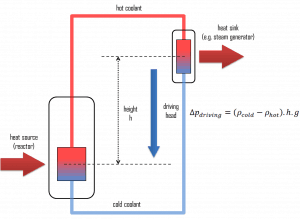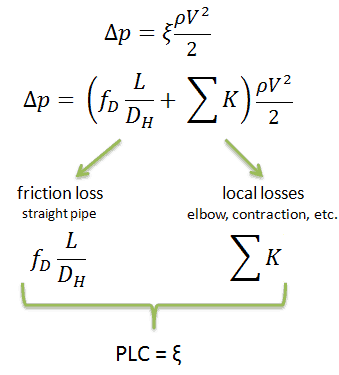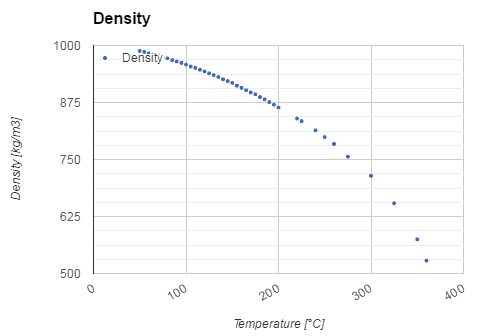This phenomenon has a similar nature to natural convection, but the heat transfer coefficient is not an object of study. In this case, the bulk flow through the loop is the object of study. This phenomenon is rather a hydraulic problem than a heat transfer problem. However, as a result, natural circulation removes heat from the source and transports it to the heat sink and is of the highest importance in reactor safety.

Conditions Required for Natural Circulation
Similarly, as for natural convection, natural circulation essentially does not operate in the orbit of Earth, and natural circulation occurs in a loop only under specific conditions. Even after natural circulation has begun, removal of any one of these conditions will cause the natural circulation to stop. The conditions for natural circulation are as follows:
- Presence of proper acceleration. Natural circulation can only occur in a gravitational field or the presence of another proper acceleration, such as acceleration centrifugal force.
- Presence of heat source and heat sink. Heat source and heat sink are required because natural circulation is generated by density difference in the fluid occurring due to temperature difference. Fluid entering a heat source receives heat, becomes less dense, and rises by thermal expansion. Thermal expansion of the fluid plays a crucial role. Process in a heat sing is opposite, the heat sing receives heat, and the fluid becomes denser. The density difference is the driving force for natural circulation flow. The temperature difference must be maintained for the natural circulation to continue. The addition of heat by a heat source must exist at the high-temperature area. Continuous heat removal by a heat sink must exist at the low-temperature area. Otherwise, the temperatures would eventually equalize, and no further circulation would occur.
- Proper geometry. The presence and magnitude of natural circulation also depend on the geometry of the problem. The presence of a fluid density gradient in a gravitational field does not ensure the existence of natural convection currents. Natural circulation in a fluid-filled closed loop is established by locating a heat sink in the loop at an elevation higher than the heat source. The circulating fluid removes heat from the source and transports it to the sink. The flow can be a single-phase or two-phase wherein vapor flows alongside the liquid. The temperature difference must be maintained for the natural circulation to continue. The addition of heat by a heat source must exist at the high-temperature area. Continuous heat removal by a heat sink must exist at the low-temperature area. Otherwise, the temperatures would eventually equalize, and no further circulation would occur. It is possible to have natural circulation occur in two-phase flow, but it is usually more difficult to maintain flow.
- Fluids in contact. The two areas must be in contact to make the flow between the areas possible. If the flow path is obstructed or blocked, natural circulation cannot occur.
Natural Circulation – Flow Rate
The natural circulation flow rate in the loop under steady-state conditions is determined from the balance between the driving and the resisting forces. Driving force results from density difference between hot leg and cold leg of the loop. The head required to compensate for the head losses is created by density gradients and elevation changes.
Thermal Driving Head
The thermal driving head is the force that causes natural circulation to take place. It is caused by the difference in density between two bodies or areas of fluid. Consider two equal volumes of the same type of fluid. If the two volumes are not at the same temperature, then the volume with the higher temperature will also have a lower density and, therefore, less mass. It is known that the density of gases and liquids depends on temperature, generally decreasing (due to fluid expansion) with increasing temperature. Since the volume at the higher temperature will have a lower mass, it will also have less force exerted on it by gravity. This difference in the force of gravity exerted on the fluid will tend to cause the hotter fluid to rise and the colder fluid to sink. The thermal driving head can be simply calculated using the difference in hydrostatic pressures:
As can be seen, the greater the temperature difference between the hot and cold areas of fluid, the greater the thermal driving head and the resulting flow rate.
Hydraulic Resisting Force
 As was written, the natural circulation flow rate, V, in the loop, under steady-state conditions is determined from the balance between the driving head and the resisting forces. Like pipe friction, the overall pressure losses are proportional to the square of the flow rate, and therefore they can be easily integrated into the Darcy-Weisbach equation. Engineers often use the pressure loss coefficient, PLC. It is noted K or ξ (pronounced “xi”). This coefficient characterizes pressure loss of a certain hydraulic system or a part of a hydraulic system. It can be easily measured in hydraulic loops. The pressure loss coefficient can be defined or measured for both straight pipes and especially for local (minor) losses. Since the Darcy friction factor is a function of velocity (in Reynolds number), then the calculation of the pressure loss coefficient is an iterative process.
As was written, the natural circulation flow rate, V, in the loop, under steady-state conditions is determined from the balance between the driving head and the resisting forces. Like pipe friction, the overall pressure losses are proportional to the square of the flow rate, and therefore they can be easily integrated into the Darcy-Weisbach equation. Engineers often use the pressure loss coefficient, PLC. It is noted K or ξ (pronounced “xi”). This coefficient characterizes pressure loss of a certain hydraulic system or a part of a hydraulic system. It can be easily measured in hydraulic loops. The pressure loss coefficient can be defined or measured for both straight pipes and especially for local (minor) losses. Since the Darcy friction factor is a function of velocity (in Reynolds number), then the calculation of the pressure loss coefficient is an iterative process.
Natural Circulation in Reactor Engineering

In reactor engineering, natural circulation is a very desired phenomenon since it can provide reactor core cooling after the loss of RCPs (e.g., after the loss of offsite power – LOOP). In PWRs, plant design provides an elevation difference, h, of approximately 12 meters between the centerline of the steam generator and the centerline of the reactor core. The system’s layout must ensure natural circulation capability following a loss of flow to permit cooldown without overheating the core. Moreover, the interconnecting piping from the reactor pressure vessel to the steam generators must be intact, free from obstructions such as non-condensable gasses (e.g., steam pockets). In this way, natural circulation will ensure that the fluid will continue to flow as long as the reactor is hotter than the heat sink, even when power cannot be supplied to the pumps.
RCPs are not usually “safety systems”, as defined. After the loss of RCPs (e.g., after the loss of offsite power – LOOP), the reactor must be shut down immediately since RCPs slowly coast down to zero flow rate. Sufficient and safe residual heat removal is then ensured by a natural circulation flow through the reactor. With no forced flow, the coolant in the core begins to heat up. The increase in coolant temperature causes a reduction in coolant density, which moves the coolant into the steam generator. It must be noted natural circulation is not sufficient to remove the heat being generated when the reactor is at power.
Modern reactor designs use natural circulation, a very important safety feature. Many passive safety systems in modern reactor designs operate without using any pumps, which creates increased design safety, integrity, and reliability, while simultaneously reducing overall reactor cost.
Indicators of Natural Circulation
In PWRs, various parameters can be used to indicate or verify natural circulation is occurring. This is dependent on plant type and plant systems. For instance, for a PWR, selected parameters that can be used are as follows:
- Ideally, the flow rate can be measured in each of the loops.
- ΔT (THot – TCold). The temperature difference between hot legs and cold legs should be 25-80% of the full power value and either steady or slowly decreasing. This indicates that the decay heat is being removed from the system at an adequate rate to maintain or reduce core temperatures.
- Hot and cold leg temperatures should be steady or slowly decreasing. Again, this indicates that heat is being removed, and the decay heat load is decreasing as expected.
- Steam generator steam pressure (secondary side pressure) should be following reactor coolant system temperature, and this verifies that the steam generator is removing heat from the RCS coolant.
Special Reference: Natural circulation in water-cooled nuclear power plants, IAEA-TECDOC-1474. IAEA, 2005. ISBN 92–0–110605–X.

